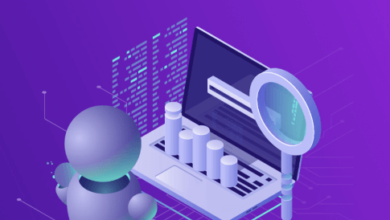What AI Creative Testing Means for Ad Optimization

In the fast-evolving world of digital advertising, creating ads that resonate with audiences is both an art and a science. AI creative testing has emerged as a transformative tool, enabling marketers to refine ad content with unprecedented precision by analyzing performance across diverse variables. By leveraging artificial intelligence to test and optimize creative elements—such as visuals, copy, and calls-to-action—businesses can craft campaigns that maximize engagement and conversions, whether targeting B2B decision-makers or B2C consumers. This article explores the role of AI creative testing in ad optimization, detailing its mechanisms, benefits, and strategic implications for marketers aiming to elevate campaign performance in a competitive landscape.
Revolutionizing Creative Development
AI creative testing fundamentally changes how marketers approach ad creation by enabling rapid, data-driven experimentation. Traditionally, developing ad creatives involved time-consuming manual processes, with marketers relying on intuition or limited focus groups to assess effectiveness. AI streamlines this by analyzing vast datasets to test multiple creative variations simultaneously, identifying what resonates most with target audiences.
For instance, a B2C retailer might use AI to test different versions of a social media ad, varying headlines, images, or colors. The AI could reveal that a vibrant image with a concise headline outperforms a text-heavy version, guiding the final creative. In B2B, a software vendor might test webinar invitations with different value propositions, discovering that a focus on ROI drives higher registrations. By automating and scaling the testing process, AI ensures creatives are optimized for impact before campaigns launch, saving time and resources.
See also: Improve Dh58goh9.7 Software: Performance Enhancement Techniques
Harnessing Data for Precision Insights
The power of AI creative testing lies in its ability to process and analyze extensive data, from audience demographics to behavioral metrics. By integrating data from ad platforms, CRM systems, and website analytics, AI evaluates how different creative elements perform across channels and audience segments. This provides marketers with granular insights into what drives engagement, clicks, or conversions.
Consider a B2C fashion brand testing a video ad on Instagram. AI might analyze metrics like view completion rates and click-throughs, revealing that a 15-second clip with upbeat music outperforms a 30-second version. In B2B, a vendor could test email campaign subject lines, finding that a problem-solving tone resonates more with decision-makers than a promotional one. These insights enable marketers to refine creatives with precision, ensuring campaigns align with audience preferences and behaviors.
Optimizing Across Multiple Variables
AI creative testing excels at evaluating multiple creative variables simultaneously, a feat that traditional methods struggle to achieve. Variables such as headlines, visuals, tone, format, or calls-to-action can be tested in countless combinations, allowing marketers to identify the optimal mix for performance.
For example, a B2C retailer might test a banner ad with variations in imagery (product-focused versus lifestyle), text (discount-driven versus value-driven), and button placement. AI can analyze thousands of permutations, identifying the combination that maximizes click-throughs. In B2B, a vendor might test landing page designs for a product demo, varying headlines, form fields, and testimonials to determine what drives conversions.
This multi-variable testing ensures no stone is left unturned. By exploring a wide range of creative elements, AI uncovers insights that might be missed in manual testing, enabling marketers to craft ads that are both compelling and effective.
Enabling Real-Time Campaign Refinement
One of AI creative testing’s most significant advantages is its ability to provide real-time feedback, allowing marketers to refine campaigns on the fly. Unlike traditional testing, which often requires weeks to assess performance, AI delivers immediate insights, enabling rapid adjustments to optimize outcomes.
For instance, a B2C brand running a Facebook ad campaign might use AI to monitor performance across creative variations. If data shows that a video ad with a humorous tone underperforms, AI can recommend switching to a more emotional narrative mid-campaign. In B2B, a vendor could test multiple versions of a LinkedIn ad and, upon finding that a specific call-to-action drives higher engagement, scale that version in real time.
This agility is particularly valuable in fast-paced digital environments, where customer preferences can shift rapidly. By enabling real-time refinement, AI ensures campaigns remain relevant and impactful, maximizing ROI.
Personalizing Creatives for Diverse Audiences
Personalization is a cornerstone of modern marketing, and AI creative testing enhances this by tailoring ads to specific audience segments. By analyzing demographic, behavioral, and contextual data, AI identifies which creative elements resonate with different groups, enabling highly targeted campaigns.
For example, a B2C retailer might discover that younger shoppers respond to vibrant, lifestyle-focused ads, while older customers prefer product-centric visuals with clear pricing. AI can test these variations and recommend tailored creatives for each segment. In B2B, a vendor might find that IT managers respond to technical details in ads, while CFOs prioritize cost-saving messages, prompting segment-specific campaigns.
This personalization extends to channel preferences. AI can test whether a video ad performs better on YouTube or a static ad on LinkedIn, ensuring creatives are optimized for the platform where audiences engage most. By aligning ads with audience preferences, AI creative testing drives higher engagement and conversions.
Addressing Ethical and Bias Considerations
While AI creative testing offers immense potential, it relies on data and algorithms that must be managed responsibly to avoid ethical pitfalls. Biased datasets or algorithms can lead to ads that exclude certain groups or perpetuate stereotypes, undermining campaign effectiveness and brand reputation.
Marketers must audit AI systems regularly to ensure fairness. For instance, a B2C campaign targeting diverse audiences should test creatives across demographics to avoid unintended bias in imagery or messaging. In B2B, ads must reflect the professional diversity of decision-makers, ensuring inclusivity in tone and content.
Privacy is another critical concern. AI testing often uses customer data to analyze preferences, requiring compliance with regulations like GDPR or CCPA. Transparent data practices, such as offering opt-in consent for personalized ads, build trust. By addressing these ethical considerations, marketers can leverage AI responsibly, ensuring campaigns are both effective and equitable.
Integrating AI with Marketing Workflows
To maximize the benefits of AI creative testing, businesses must integrate it seamlessly with existing marketing workflows. Ad platforms, CRM systems, and analytics tools should feed data into AI models, creating a unified ecosystem for testing and optimization. For example, integrating Google Ads data with a CRM allows AI to test how ad variations drive website conversions, ensuring comprehensive insights.
This integration requires strategic planning to avoid data silos. A B2C retailer might connect its e-commerce platform with social media analytics to test ad performance across channels, while a B2B vendor could link webinar registrations with CRM data to assess creative impact. Training teams to interpret AI insights is also essential, ensuring marketers can translate test results into actionable strategies.
A cohesive workflow enhances AI’s effectiveness, enabling marketers to test, refine, and deploy creatives efficiently. This integration transforms creative testing into a strategic driver of campaign success.
Adapting to Emerging Trends and Platforms
The digital advertising landscape is constantly evolving, with new platforms and trends reshaping how audiences engage with brands. AI creative testing is uniquely suited to this dynamic environment, as it can adapt to emerging channels like augmented reality (AR), voice search, or gaming platforms.
For instance, a B2C brand might use AI to test AR ads that let customers visualize products in their homes, identifying which formats drive engagement. In B2B, AI could test virtual event invitations, determining whether video or text-based formats resonate more with decision-makers. By analyzing performance on new platforms, AI ensures creatives remain relevant.
Customer feedback complements these insights, revealing shifts in preferences, such as a demand for sustainable messaging or interactive formats. By staying agile, AI creative testing enables marketers to align campaigns with emerging trends, ensuring long-term effectiveness.
Driving Campaign Success with AI-Powered Insights
AI creative testing is redefining ad optimization by offering precision, agility, and personalization that traditional methods cannot match. By testing multiple variables, providing real-time feedback, and tailoring creatives to diverse audiences, AI empowers marketers to craft campaigns that resonate deeply. Ethical practices and seamless integration amplify its impact, while adaptability ensures relevance in a dynamic landscape.
For businesses, AI creative testing is a strategic asset that transforms how ads are developed and optimized, driving higher engagement, conversions, and ROI. As marketing continues to evolve, embracing AI creative testing positions brands to stay ahead, delivering campaigns that captivate audiences and achieve lasting success in a competitive digital world.





